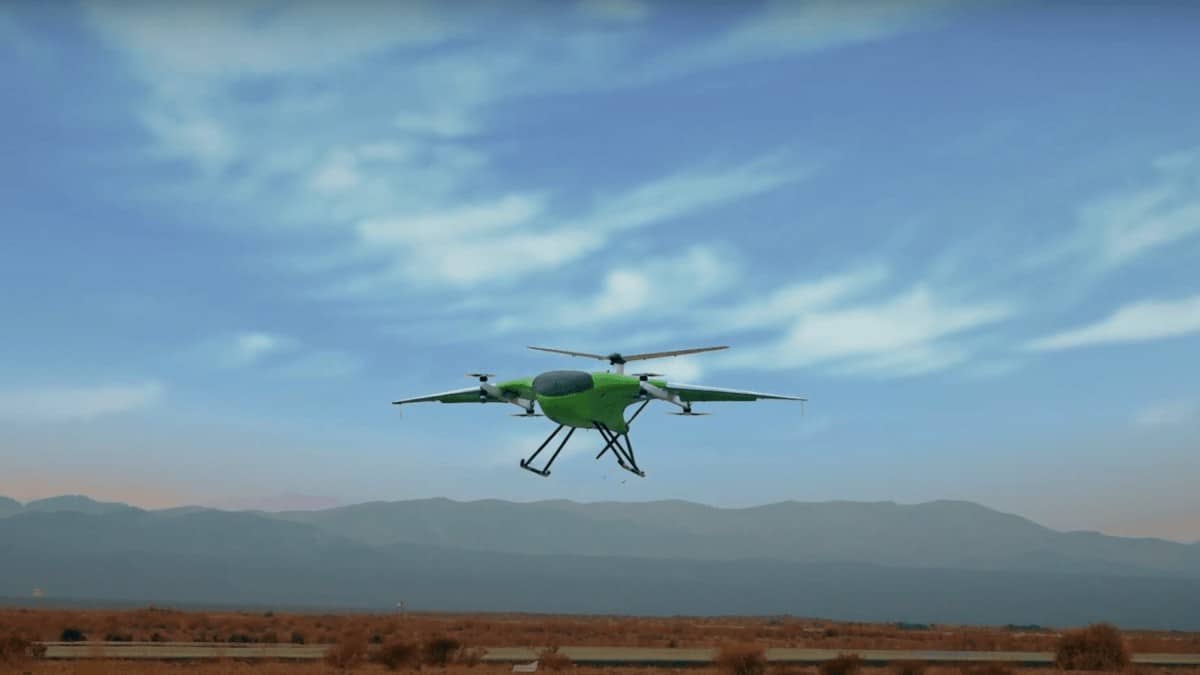Arc Aerosystems recently announced its upcoming passenger aircraft, Arc Linx P9, at the Air finance Journal event in Dublin, as per its website.
“It’s a very exciting design concept that is the ultimate solution for the market, that is affordable, safe and practical, whilst providing the right answer to the current environmental concerns.”
Seyed Mohseni, ARC’s CEO
Arc Linx P9
Arc’s (formerly Samad Aerospace) Linx P9 is a nine-seat hybrid VTOL gyroplane architecture for longer trips. This upcoming aircraft reflects the UK-based startup’s vision for a “cost-effective, low-carbon solution to intercity travel.”
Technical details
The airframe of ARC LINX P9 is a combination of a gyroplane, a helicopter, and a plane that uses Vertical Take-Off and Landing technology (VTOL).
The aircraft’s entire composite construction results in an empty weight of only 4,255 lb (1,930 kg).
Interestingly, its nine-seat cabin clearly resembles a helicopter, although it has a narrow main wing of 41.3 feet (12.6 meters). Along with a large tail wing and fins, it also includes a pair of 2-m (6.6-ft) pusher props dangling off the back.
Another interesting fact is that the aircraft has a pitch-controllable 13-m (42.6-ft) top rotor, without a tail rotor, just like a gyroplane. However, Arc Linx P9 employs an electric motor, while gyroplanes utilize unpowered top rotors.
It has hybrid electric and twin turboprop powertrain variations that both use SAF. However, Arc plans to replace it with hydrogen in the future.
Moreover, it has a retractable tricycle landing gear as standard equipment. It is a highly adaptable passenger and freight craft as it can execute a jump take-off and no-roll landing without needing a runway.
Speed
The pusher props activate once they are in the air. After airspeed is reached, the top rotor can be quickly slowed down because the wings effectively handle 90% of the lifting duties. In addition to reducing drag, this also largely removes the asymmetrical lift that helicopters experience from retreating blade stalls. It is, therefore, capable of a top cruise speed of 230 mph (370 km/h). Only the Eurocopter AS365 Dauphin and other futuristic exotics, such as the Sikorsky X2 with its coaxial twin-top rotor, have ever surpassed it in terms of speed.
Range
Remarkably, 370 kW (496 hp) turbo engines will power the pusher props, while the top rotor may be electronic. Using hydrocarbon fuels might be a tad excessive for an aircraft with a future-oriented design. However, the Linx P9 is better for regional routes than cross-town journeys due to its size and speed.
Arc estimates that a standard configuration and 1,320 lb (600 kg) of gasoline can provide a 590-mile (950 km) range. A fitted extended-range tank can also achieve a range of 808 miles (1,300 kilometers).
Cost
Arc estimates that the operating cost is approximately US$505 per flight hour. The Linx P9 provides a 40% more cost-effective option based on the DARPA model. It also allows an increased range of 30% than similar size helicopters based on the Roskam method.
Arc must now develop test models to refine its design and begin the process of launching this aircraft to market. Arc does not provide a timeframe for these processes. Like every other startup in the aerospace industry, the company is still seeking funding.
“Development of an air vehicle requires dedication to understand clients’ needs in 5 to 50 years in the future, and define a road map of a timely certifiable technology to achieve solutions for those needs.”
Seyed Mohseni, ARC’s CEO
The road ahead of Arc and its new aircraft will indeed be difficult. Nonetheless, it would be exciting to see this innovative aircraft fare in the aerospace industry.

